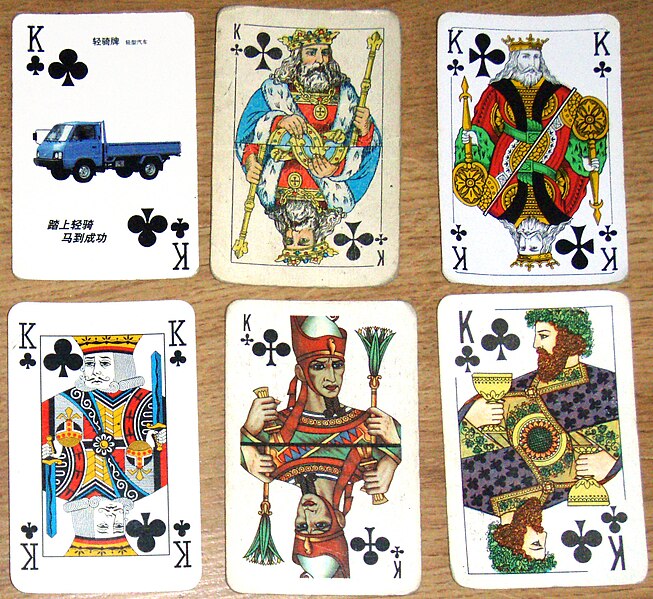The cards directly invoke the days of the year. In a standard deck of playing cards, count ace=1, jack=11, queen=12, king=13, joker=1, and all of the other cards at face value. Without the jokers, the rest of the cards total 364. If we add in a joker (for April Fool's Day), we get 365. Add in the other joker (for Leap Day) and we get 366.
Discard the jokers and count the cards. There's 52, corresponding to the weeks in a year.
There are 12 face cards, corresponding to the 12 months of the year.
There are four suits, with 13 cards each. Each of the four seasons of the year has 13 weeks.
Within each suit, there are 13 ranks, corresponding to the months in the lunar year.
According to this source, Dmitri Mendeleev, creator of the Periodic Table of Elements, came up with the idea for the organization of the table as he laid out a tableaux of cards on a table while playing solitaire.
The only reason that the ace of spades gets a big, fancy design is because British royalty used to charge a special tax on cards, being a leisurely commodity. To show that the duty had been paid, a clerk would stamp one card in the deck. Because of the way cards were sorted and packaged, the top card just happened to be the ace of spades. Hence the expression "Duty ace".
Bonus buck: See my old open-source Flash card-shuffler here, though it's not much to look at. The link to my blog post includes an explanation and source code download for developers interested in using it for their own games.

